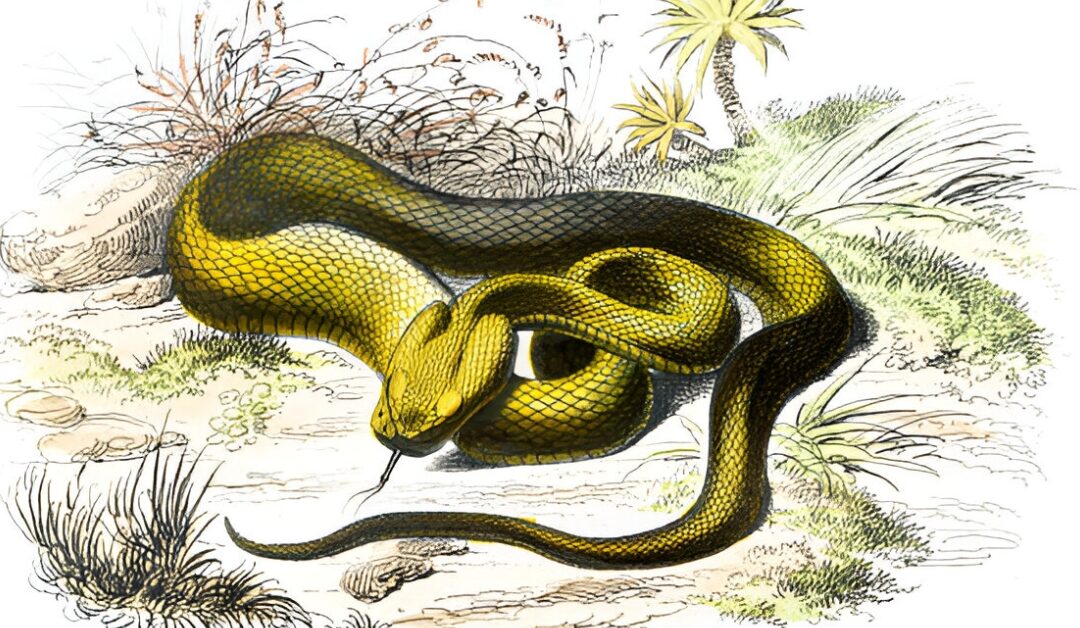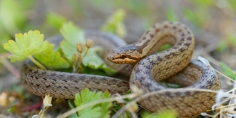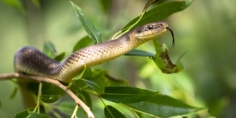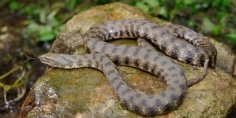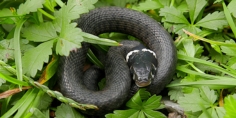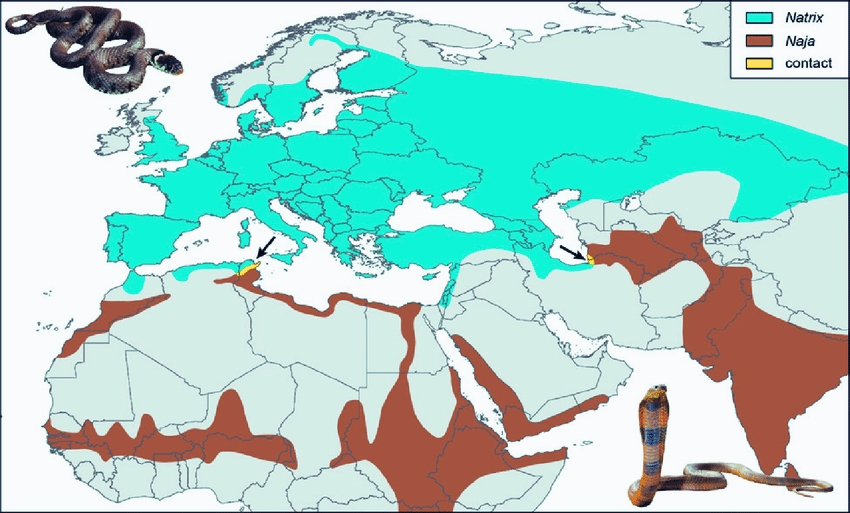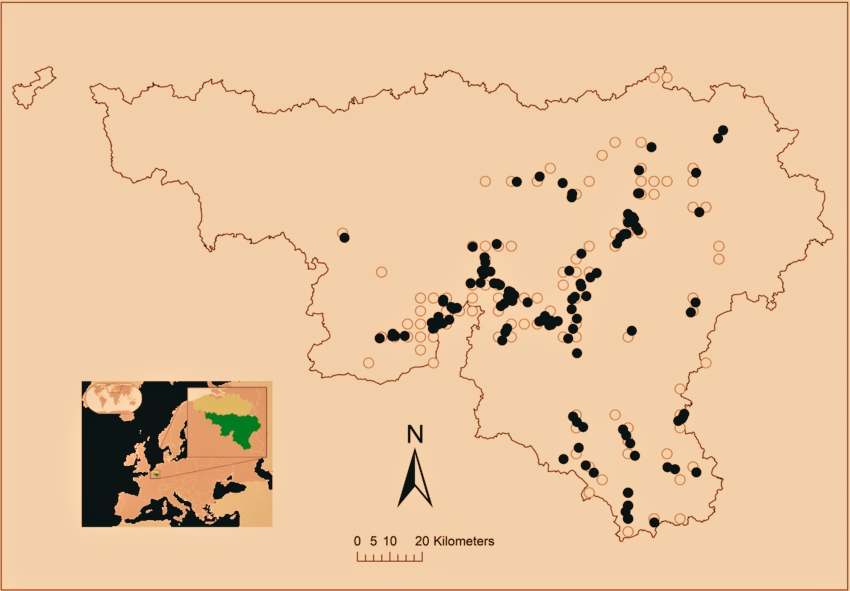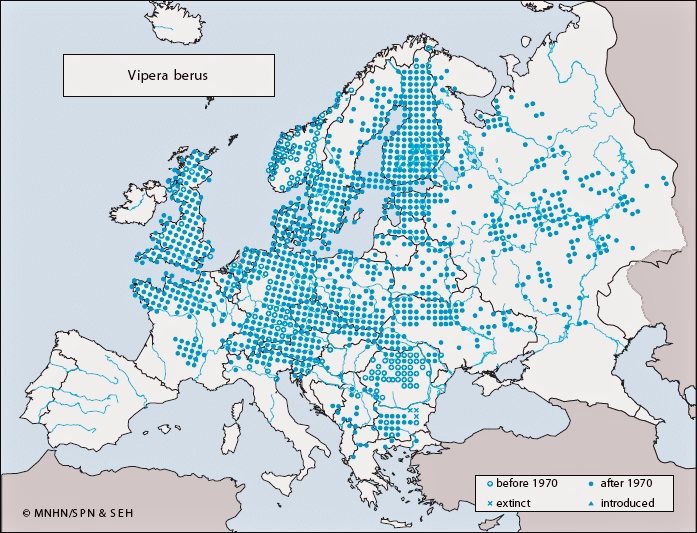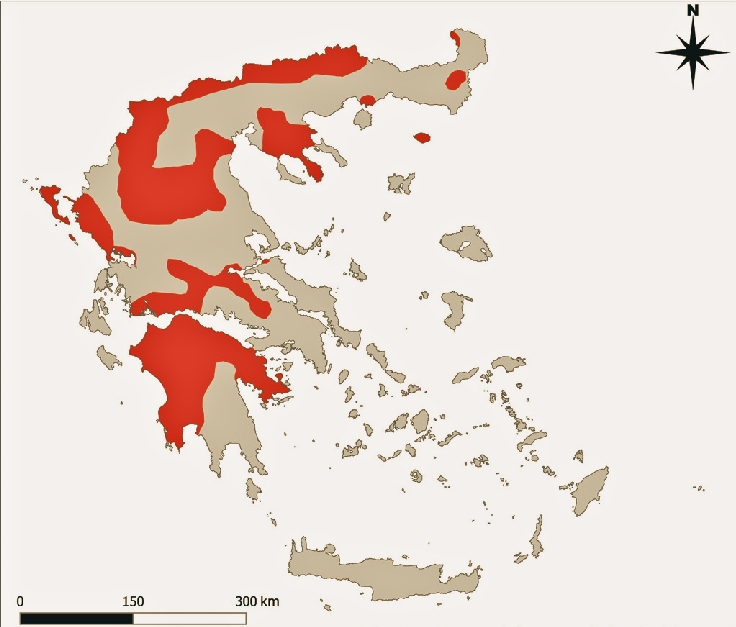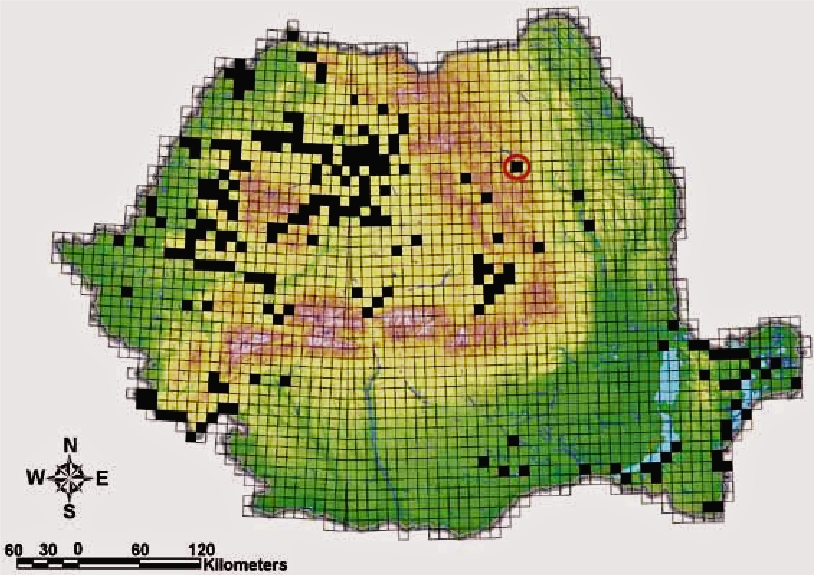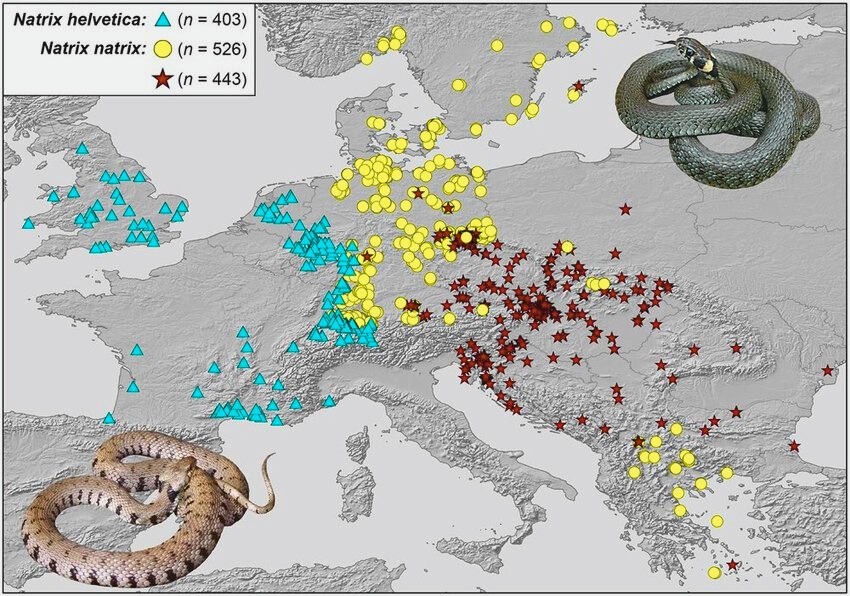Introduction
Welcome to our comprehensive guide on the diverse and fascinating snakes in Germany. Understanding local wildlife is not only crucial for respecting and conserving nature but also enriches our outdoor adventures. Whether you’re a wildlife enthusiast, an adventurous hiker, or a conservationist, this guide will provide valuable insights into the snakes that call Germany home.
Overview of Snakes in Germany
Germany hosts a variety of snake species, each adapted to its unique environment. From lush forests to tranquil wetlands, these habitats provide a sanctuary for snakes, contributing to the country’s rich biodiversity.
General Population and Distribution of Snakes in Germany
Snakes in Germany are predominantly non-venomous, with a few exceptions. They are found across various regions, thriving in ecosystems that offer ample food and shelter.
Notable Habitats and Regions for Snakes in Germany
- Forests: Home to species like the Grass Snake, forests provide a cool, moist environment ideal for these reptiles.
- Wetlands: The European Adder often inhabits moist, grassy areas near water bodies, where prey is abundant.
- Urban Areas: Surprisingly, some species adapt well to urban environments, coexisting with human populations.
Common Snake Species in Germany
Grass Snake (Natrix natrix)
- Physical Characteristics: Easily recognized by its olive-green color and distinctive yellow collar, the Grass Snake is one of the most common snakes in Germany.
- Preferred Habitats: Thrives in damp environments, particularly near ponds, lakes, and rivers.
- Behavior and Diet: Non-venomous and shy, it feeds primarily on amphibians and small mammals.
- Interesting Fact: Despite their impressive size, Grass Snakes in Germany are completely harmless to humans and are known for their gentle nature.
Smooth Snake (Coronella austriaca)
- Identification Features: Small and slender, with a brown or grayish color and indistinct markings.
- Habitat and Distribution: Prefers dry, rocky areas, often found in heathlands and sunny slopes.
- Behavior and Diet: Feeds mainly on small reptiles and mammals, using constriction to subdue prey.
- Interesting Fact: The Smooth Snake is ovoviviparous, meaning it gives birth to live young rather than laying eggs.
European Adder (Vipera berus)
- Physical Features and Color Variations: Known for its distinctive zigzag pattern along its back, this common adder is the only venomous snake in Germany.
- Distribution and Habitats: Commonly found in heathlands, moorlands, and forest edges.
Unique Behaviors: Despite its venom, the common adder is generally not aggressive and prefers to retreat when disturbed. - Unique Behaviors: Despite its venom, it is generally not aggressive and prefers to retreat when disturbed.
- Interesting Fact: The European Adder is the only venomous snake widely found in Germany, and it hibernates during the winter months.
Aesculapian Snake (Zamenis longissimus)
- Identification Features: The Aesculapian Snake is long and slender, with a glossy olive or brown body. It can reach lengths of up to 200 cm.
- Habitat and Distribution: Preferring warmer environments, this snake is often found in vineyards and forest edges in southern Germany.
- Behavior and Diet: It feeds on small mammals, birds, and eggs. Known for its climbing ability, the Aesculapian Snake often hunts in trees and shrubs.
- Interesting Fact: The Aesculapian Snake is named after the Greek god of medicine, Asclepius, and is a symbol of healing and medicine.
Dice Snake (Natrix tessellata)
- Identification Features: The Dice Snake has a grey or olive body with a pattern resembling dice, hence its name.
- Habitat and Distribution: This water-loving snake is typically found near rivers, lakes, and marshes in southeastern Germany.
- Behavior and Diet: Dice Snakes primarily feed on fish and amphibians. They are excellent swimmers and often dive to escape predators.
- Interesting Fact: Dice Snakes can remain submerged underwater for long periods, making them adept hunters in aquatic environments.
Barred Grass Snake (Natrix helvetica)
- Identification Features: The Barred Grass Snake looks similar to the common Grass Snake but has more pronounced dark banding across its body.
- Habitat and Distribution: This snake also prefers wet habitats and is often found in regions overlapping with the Grass Snake.
- Behavior and Diet: Like its relative, the Barred Grass Snake is a proficient swimmer and primarily feeds on amphibians.
- Interesting Fact: The Barred Grass Snake was once considered a subspecies of the Grass Snake but has been recognized as a distinct species due to genetic differences.
Personal Encounters with Snakes in Germany
- Encounter in the Black Forest with a Grass Snake: During a hike in the Black Forest, I stumbled across a Grass Snake peacefully gliding through the underbrush. Its vibrant green scales shimmered in the sunlight, a beautiful sight that underscored the richness of Germany’s native wildlife. This encounter in the Black Forest highlighted the importance of preserving natural habitats for such magnificent creatures. The serene environment of the Black Forest provides an ideal sanctuary for diverse wildlife, emphasizing the need for conservation efforts.
- Observing an Adder near a Wetland Area: While camping near a wetland, I observed a European Adder moving gracefully through the reeds at dusk. This experience was a poignant reminder of the diverse habitats these snakes inhabit and the ecological balance they help maintain.
- Urban Sighting and Interaction: In a more urban setting, I once spotted several Smooth Snakes in a grassy area near a residential zone. This sighting emphasized how adaptable some snake species are, capable of living harmoniously alongside urban developments.
Mystical Wonders of the German Forest: Snakes in Germany
-
-
Exploring the Enchanting Black Forest: Experience a mystical retreat into nature’s heart, where dense canopies and serene trails create an immersive adventure. Marvel at the lush greenery and vibrant wildlife, including rare sightings of Grass Snakes.
-
Close Encounters with Native Wildlife: A personal encounter with a Grass Snake underscores the forest’s role as a vital sanctuary for diverse species. Such moments highlight the importance of preserving these natural habitats.
-
Ecological Richness and Conservation: The tranquil ambiance of the German forest, from majestic oaks to melodious birds, showcases a harmonious ecosystem. This emphasizes the pressing need for conservation efforts to protect this ecological haven.
-
Expert Insights and Conservation Efforts for Snakes in Germany
- Quotes and Insights: According to the German Herpetological Society, understanding snake behavior and needs is vital for their conservation. “Protecting their habitats from human encroachment and preserving natural ecosystems is crucial,” notes a spokesperson.
- Contributions of Local Wildlife Preservation Organizations: Organizations across Germany are actively involved in habitat restoration projects, ensuring that snake populations thrive. These efforts include public education programs to raise awareness about the importance of snakes in maintaining ecological balance.
- Highlighting Conservation Efforts and Success Stories: Successful initiatives have seen the reintroduction of certain snake species into areas where they had previously declined, showcasing the effectiveness of focused conservation actions.
Safety and Etiquette for Wildlife Encounters: Snakes in Germany
- Tips on Safely Observing and Interacting with Snakes in Germany:
- Maintain a respectful distance to avoid startling them.
- Wear appropriate footwear and clothing when exploring snake habitats.
- Educate yourself on identifying venomous vs. non-venomous snakes.
- Importance of Respecting Wildlife and Their Habitats: Respecting local wildlife ensures that we can continue to enjoy and benefit from the natural beauty around us. Always leave habitats as you found them, without disturbing the flora and fauna.
Myths and Misconceptions about Snakes in Germany
- Myth: All snakes are dangerous.
- Fact: Most snakes are harmless and would rather avoid human interaction.
- Understanding and appreciating snakes’ roles in ecosystems can help dispel these myths.
Range Maps of German Snake Species: Snakes in Germany
Range Map of the Grass Snake (Natrix natrix)
The Grass Snake (Natrix natrix) is widely distributed across Germany, favoring wetland areas, rivers, and lakes. This range map highlights the regions where Natrix natrix is most commonly found, providing a visual guide to its preferred habitats throughout the country. Because Natrix natrix thrives in various wetland environments, conservation efforts often focus on protecting these crucial habitats. Understanding the distribution of Natrix natrix helps in preserving this non-venomous snake species.
Distribution ranges of grass snakes (Natrix natrix complex) and cobras (Naja spp.), combined from bAnnikoV et al. (1977) and sindAco, Venchi & grieco (2013). Areas of potential overlap highlighted in yellow and by arrows.
Range map by researchgate.net
Range Map of the Smooth Snake (Coronella austriaca)
The Smooth Snake (Coronella austriaca) is predominantly found in the southern and central parts of Germany. This range map provides a detailed look at the areas where this elusive and non-venomous snake species thrive, illustrating its preferred dry, heathland, and forest habitats.
Distribution of the 250 smooth snakes (Coronella austriaca) known locations in Belgium (open circles) and of the 112 studied populations (black circles)
Range map by researchgate.net
Range Map of the European Adder (Vipera berus)
The European Adder (Vipera berus) is commonly found throughout Germany, with a significant presence in northern and central regions. This range map outlines the various habitats where this venomous snake species resides, from coastal areas to forests and heathlands, providing a comprehensive view of its distribution across the country.
European distribution of Vipera berus from The Atlas of Amphibians and Reptiles in Europe (Gasc et al. 1997 (http://www.seh-herpetology.org). Each dot represents a 50 x 50 km UTM grid square. Copyright © Muséum National d’Histoire Naturelle & Service du Petrimone Naturel and Societas Europaea Herpetologica. Used with permission.
Range map by researchgate.net
Range Map of the Aesculapian Snake (Zamenis longissimus)
The Aesculapian Snake (Zamenis longissimus) is primarily found in the southern regions of Germany, with notable populations in the Rhine Valley and Bavarian Forest. This range map details the areas where this non-venomous snake species can be seen, emphasizing its preference for warm, forested habitats and riverine environments.
Map of Greece showing confirmed areas of distribution (in red) of the Aesculapian snake Zamenis longissimus.
Range map by researchgate.net
Range Map of the Dice Snake (Natrix tessellata)
The Dice Snake (Natrix tessellata) is mainly found in the eastern and southeastern parts of Germany. This range map highlights the regions where this semi-aquatic snake species thrives, particularly in river valleys, lakeshores, and wetlands, offering a detailed view of its distribution across the country.
Distribution of the dice snake ( Natrix tessellata ) in Romania. The black square in a red circle denotes the documented extinct population from Tarc ă u (Neam ţ County) in Romanian Moldavia.
Range map by researchgate.net
Range Map of the Barred Grass Snake (Natrix helvetica)
The Barred Grass Snake (Natrix helvetica) is widely distributed across Germany, with substantial populations in both northern and western regions. This range map illustrates the various habitats where Natrix helvetica is found, including wetlands, rivers, and open forests, providing a clear depiction of its extensive distribution throughout the country. Conservation efforts focus on protecting the natural environments that support Natrix helvetica, ensuring the survival of this non-venomous snake species.
Sampling sites for mitochondrial lineages of the barred grass snake (Natrix helvetica, blue triangles) and the common grass snake (N. natrix, yellow circles and red stars). Insets: N. helvetica (left, Linz am Rhein, Germany; photo: Wolfgang Böhme) and N. natrix (right, Moritzburg, Germany; photo: Melita Vamberger). Map was created using arcgis 10.2 (www.esri.com/arcgis) and adobe illustrator CS6 (www.adobe.com/ products/illustrator.html).
Range map by researchgate.net
Germany’s snake population is a vital component of its natural heritage. By learning about and respecting Germany snakes, we contribute to their preservation and the health of our ecosystems. Next time you’re out in nature, keep an eye out for these fascinating Germany snakes. And don’t forget to share your Germany snakes sightings on social media to inspire others to appreciate and protect local wildlife.
FAQ
What types of snakes can be found in Germany?
Germany is home to several species of snakes, including the European adder, smooth snake, and grass snake. Each species has unique characteristics and habitats.
Are there any venomous snakes in Germany?
Yes, the European adder is the only venomous snake native to Germany. However, its bite is rarely fatal and usually only dangerous to small animals or allergic individuals.
Where can I commonly find snakes in Germany?
Snakes in Germany are typically found in rural areas, forests, meadows, and near water bodies like rivers and lakes. They prefer habitats that offer ample hiding spots and prey.
What do snakes in Germany eat?
Most snakes in Germany feed on small mammals, birds, amphibians, and insects. They play a crucial role in controlling pest populations.
Are snakes in Germany protected by law?
Yes, many snake species in Germany are protected under national and European conservation laws. It is illegal to harm or capture them without proper authorization.
How can I identify a snake in Germany?
Identification features include the snake’s color, pattern, size, and head shape. Field guides and apps can help you accurately identify different species.
What should I do if I encounter a snake in Germany?
Stay calm and give the snake plenty of space. Most snakes are not aggressive and will move away if they feel threatened. Avoid making sudden movements.
How can I prevent snake bites while hiking?
Wear sturdy boots and long pants, stick to well-trodden paths, and avoid tall grass and underbrush where snakes might hide. Always watch where you step or place your hands.
What should I do if I am bitten by a snake in Germany?
Seek medical attention immediately. Try to remember the snake’s appearance to help with identification and treatment. Do not attempt to suck out the venom or apply a tourniquet.
How can I contribute to snake conservation in Germany?
Support local wildlife organizations, participate in citizen science projects, and promote awareness about the importance of snakes in the ecosystem. Avoid using pesticides that can harm snakes and their prey.
What should I do if I encounter poisonous snakes in the wild?
If you encounter poisonous snakes in the wild, stay calm and slowly back away. Do not attempt to handle or provoke them, as this increases the risk of being bitten.
Top 10 Interesting Facts About Snakes in Germany
Venomous Yet Rarely Dangerous
The European adder is the only venomous snake in Germany. While its bite can be painful, it is rarely fatal and poses little threat to humans.
Ancient Inhabitants
Fossil records indicate that snakes have been present in Germany for millions of years, evolving alongside the country’s diverse ecosystems.
Perfect Camouflage Artists
Snakes in Germany have developed impressive camouflage abilities, blending seamlessly into their natural habitats to avoid predators and ambush prey.
Seasonal Sleepers
Many German snakes enter a state of brumation (similar to hibernation) during the colder months, slowing their metabolism and activity levels to conserve energy.
Diverse Diet
The diet of snakes in Germany varies widely, including small mammals, birds, amphibians, and insects, making them important for maintaining ecological balance.
Protected Species
Several snake species in Germany are legally protected, highlighting the country’s commitment to conserving its native wildlife and biodiversity.
Unique Reproduction
The smooth snake, found in Germany, gives birth to live young instead of laying eggs, a trait uncommon among many snake species.
Symbolic Significance
Historically, snakes have appeared in German folklore and mythology, often symbolizing healing and transformation due to their ability to shed their skin.
Adaptable Survivors
Snakes in Germany are highly adaptable, thriving in diverse environments from dense forests and meadows to urban gardens and agricultural lands.
Silent Communicators
Most German snakes are not vocal; instead, they use body language and subtle movements to communicate with each other, particularly during mating seasons.
Snakes in Numbers
Did you know that dozens of snakes together are called a “den” or “pit”? During mating season, these dens can form mesmerizing “mating balls”! 🐍
Top 10 Historical Facts About Snakes in Germany
Ancient Fossil Discoveries
Fossils of snakes dating back millions of years have been found in Germany, indicating that these reptiles have long been a part of the country’s natural history.
Roman Accounts
Ancient Roman texts mention encounters with snakes in the Germanic regions, describing the local wildlife and the cultural significance of snakes among the Germanic tribes.
Medieval Symbolism
During medieval times, snakes were often depicted in German art and literature as symbols of both evil and healing, reflecting their dual role in folklore and medicine.
St. Hildegard’s Herbalism
St. Hildegard of Bingen, a renowned German abbess and herbalist from the 12th century, included references to snakes in her medical writings, highlighting their use in traditional remedies.
The Serpent in German Folklore
Snakes feature prominently in German folklore, often associated with transformation and protection, as seen in the tales of the White Serpent and other mythical creatures.
Natural History Documentation
In the 18th century, renowned German naturalist Johann Friedrich Gmelin documented various snake species in his works, contributing significantly to herpetology.
Conservation Milestones
Germany has a long history of wildlife conservation, with legal protections for snakes dating back to the early 20th century, aiming to preserve the country’s native species.
WWII Impact
During and after World War II, habitat destruction and pollution posed significant threats to Germany’s snake populations, leading to increased conservation efforts in the following decades.
Scientific Discoveries
The post-war period saw numerous scientific studies on German snakes, including the discovery of previously undocumented behaviors and physiological traits.
Modern Conservation Efforts
Today’s ongoing conservation projects and research initiatives continue to protect and study snakes in Germany, ensuring their survival and understanding their role in the ecosystem.
Common Snakes in German History
Did you know that common snake species like the Grass Snake (Natrix natrix) and Barred Grass Snake (Natrix helvetica) have been part of German folklore for centuries? In medieval Germany, these snakes symbolized wisdom and healing in various cultural beliefs. 🐍
Top 10 Fun Facts About Snakes in Germany
Sunbathing Snakes
Snakes in Germany love to bask in the sun. You’ll often find them stretched out on rocks or logs, soaking up the sun’s warmth, especially during the cooler months.
The Great Escape Artists
Some German snakes are impressive escape artists, able to slip through the smallest gaps in search of food or adventure. They can even climb trees and fences with ease!
Mini Garden Helpers
Grass snakes are commonly found in gardens and are excellent pest controllers, feasting on slugs and insects. They’re the perfect natural solution for a pest-free garden.
Water Lovers
Grass snakes in Germany are known to be strong swimmers. They can often be seen gliding through ponds and streams, hunting for frogs and fish.
Silent Stalkers
Unlike many other animals, most snakes in Germany don’t make any noise. They rely on their stealth and silence to sneak up on prey, making them expert hunters.
Masters of Disguise
Snakes in Germany are masters of camouflage. Their skin patterns and colors help them blend seamlessly into their surroundings, making them nearly invisible to predators and prey alike.
Flexible Feeders
Some German snakes can eat prey items larger than their own heads thanks to their incredibly flexible jaws. This allows them to tackle a wide variety of meals!
Social Sunbathers
During cooler periods, multiple snakes can sometimes be found basking together in sunny spots. It’s their version of a social gathering to stay warm!
Skin Shedders
All snakes in Germany shed their skin several times a year. This process not only allows them to grow but also helps remove parasites and keeps their skin healthy.
Secretive Shy Guys
Despite their fearsome reputation, most snakes in Germany are quite shy and prefer to avoid humans. They will usually slither away quickly if they sense someone approaching.
Native Snake Species in Germany
Germany is home to fascinating native snake species like the Grass Snake and European Adder. These native snake species thrive in diverse habitats across the country, from wetlands to forests. Keep an eye out for these incredible native snake species during your next nature walk in Germany! 🐍

